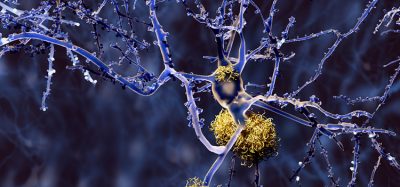Q&A: Integrated drug discovery panel – your questions answered
Posted: 11 December 2017 | Drug Target Review | No comments yet
Drug discovery from concept to drug candidate has become a collective effort where multi-disciplinary project teams from CROs work with drug companies and academia to deliver clinical candidates, overcoming multi-factorial research obstacles along the way.
Charles River has established an Integrated Drug Discovery team of experts with diverse backgrounds across multiple therapeutic areas whose sole purpose is to innovate, consult, and proactively solve problems on your discovery programmes.
During this webinar, held on 7 November, team members from Charles River discussed their views and strategies on Drug Discovery and answered challenging questions from the audience. John Montana, Corporate VP, Integrated Drug Development and Strategic Projects, Alan Young, Senior Director, In Vivo Respiratory and Inflammation, Integrated Drug Discovery, Martin O’Rourke, Senior Director Oncology In Vitro Sciences, Integrated Drug Discovery, and Robert Hodgson, PhD, Director In Vivo CNS, Integrated Drug Discovery, answer two questions posed during the webinar:
How does Charles River integrate their team to work with/ help biotech companies who are virtual?
Over 50% of integrated project work we do is with virtual biotech companies. These virtual companies usually have a small number of very experienced scientists with no wet science capability so they come to Charles River to provide a team of experienced drug discovery scientists that span all disciplines necessary to progress their project from whatever stage it is currently at to the delivery of a clinical compound. The process starts with an initial discussion with the company where they disclose information on the target of interest and the status of their programme. We work with them in a collaborative fashion to develop a work plan and a scientific strategic overview of what is necessary to take their project from its current status to the clinical candidate stage. It is an iterative process where we provide scientific input across different disciplines alongside with the virtual company scientists. Once the proposal is agreed upon, a team is assembled and wet science initiated. The team is led by a project leader within Charles River who is a scientist with significant industry experience and project leadership with a track record of delivering development candidates within the therapeutic area and/or the gene family of interest. That person works closely with a counterpart at the virtual company to ensure everyone has access to all data generated real time through a web portal.
What are some examples of new technologies that have changed the course of drug discovery?
There is a wealth of new technologies that have emerged over the last few years. At Charles River we actively look at a range of different technologies on an ongoing basis with the aim to encompass them in our discovery capabilities as they start to prove themselves to be successful and become beneficial. A couple of emerging technologies we have recently adopted include micro-dialysis and CRISPR. Micro-dialysis is a critical tool in the neuroscience area. The brain is a difficult organ to analyse and access and micro-dialysis allows you to implant a probe in the brain and measure directly what is going on in the brain in response to a drug or measure the levels of a drug. Micro-dialysis allows us to confirm that a drug has the mechanism of action that we hypothesised. It also enables us to evaluate the local concentrations of a drug in the region of interest. One of the key technologies that has emerged over the last five years is CRISPR. It is particularly exciting as it crosses all the different paradigms of drug discovery and therapeutic areas, and it brings us into preclinical models. CRISPR can now be used for target identification, target validation, developing knock-in/knock-out cell lines which support the progression of the project through screening cascades looking for biomarkers or efficacy models, but most importantly is the ability of CRISPR to generate animal models.
Related topics
CRISPR, Drug Discovery, Screening, Target Validation
Related organisations
Charles River Laboratories
Related people
Alan Young, John Montana, Martin O'Rourke, Robert Hodgson








